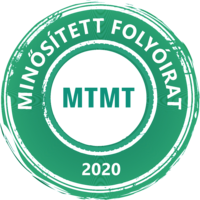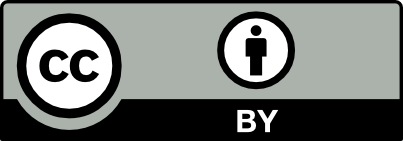Qualitative study of preferences and attitudes towards honey consumption in Hungary
DOI:
https://doi.org/10.14232/analecta.2019.2.52-58Keywords:
honey consumption, consumer preferences, attitudes, qualitative studyAbstract
Honey is becoming increasingly popular among consumers for its health and nutritional benefits as well as several other functions. The survey identifies four main dimensions of honey-purchasing motivation: medical benefits of honey consumption, dietary quality, cosmetics and sweetener. There are very limited empirical analysis of the aspects of honey consumption. The present study contributes to fill this knowledge gap through a qualitative study of consumer perceptions, preferences and attitudes towards honey among Hungarian consumers through 86 in-depth interviews. The study identifies different consumer segments, which are also willing to pay premium prices for the Hungarian or local honey. Quality cues are defined by search attributes of the product (colour, taste, aroma, thickness), and ethical attributes (warranties, brand name, country-of-origin).
Downloads
References
[2] EU (2015): EU labelling rules for honey. https://eur-lex.europa.eu/legal-content/EN/TXT/?uri=LEGISSUM%3Al21124a, Last update: 20 February 2015
[3] FAO (2016): Beekeeping and sustainable livelihoods. ftp://ftp.fao.org/docrep/fao/012/i0842e/i0842e16.pdf, Last update: 25 March 2019
[4] Törőcsik, M. (2007): A tudatos fogyasztást és az egészséget preferáló új fogyasztói trendcsoport a LOHAS csoport megjelenése Magyarországon. Élelmiszer, Táplálkozás és Marketing 4 (2): pp. 41-45.
[5] Szakály, Z. (2011): Táplálkozásmarketing. Mezőgazda Kiadó. Budapest. pp. 11-24.
[6] Cserényi P. (2014): Átlaghozam és méztermés. Méhész Újság, 1 (2): pp. 18-20.
[7] Lászlóffy Zs. (2014): Mézpiaci információk, Méhész Újság, 1 (6): pp. 26-27.
[8] Árváné Ványi, G., Kárpáti L., Popovics L., Vladimir J. (2004): A magyarországi méztermelés és marketing stratégiája. Gazdálkodás 48 (2): pp. 39-50.
[9] Kiss, E. (2018): A mézvásár megvolt, miközben állt a hazai mézpiac. Méhészet 66 (9): pp. 14-15.
[10] Feldman, Zs. (2018): 31. Nemzetközi Mézvásár és Méhésztalálkozó. Megnyitó. Jászberény. 2018.08.04.
[11] Győrffy B., Mészáros L., Glattfelder B. (2014): Az akácméz bekerült a magyar értéktárba! Méhész Újság, 1 (5): 23.
[12] Árváné Ványi, G. (2011): A mézpiac marketing szempontú elemzése különös tekintettel a fogyasztói és vásárlói magatartásra. Doktori (PhD) Értekezés. Debreceni Egyetem, Agrár- és Gazdálkodástudományok Centruma, Gazdálkodástudományi és Vidékfejlesztési Kar, Gazdálkodástudományi Intézet. Ihrig Károly Gazdálkodás- és Szervezéstudományok Doktori Iskola. Debrecen.
[13] Árváné Ványi, G., Csapó Zs., Kárpáti L. (2010): Mézfogyasztói szokások és a mézminőség fogyasztói megítélése az Észak-Alföldi régióban, In: Csépe Andrea (szerk.): „Új Marketing Világrend”. Egyesület a Marketing Oktatásért és kutatásért (EMOK) XVI. országos konferencia: Tanulmánykötet. Budapesti Kommunikációs és Üzleti Főiskola Marketing Intézete Budapest. pp. 193-212.
[14] Czipa, N. (2010): Különböző eredetű mézek összehasonlító vizsgálata és a gyártmánykialakítás hatása a minőségre. Debrecen
[15] Kovács I., Lehota J., Komáromi N. (2016): Analysis of the characteristics of the sustainable food consumption in Hungary, EMOK XXII. ORSZÁGOS KONFERENCIA, Debrecen
[16] Lehota J. (2001): Élelmiszer-gazdasági marketing, Műszaki Könyvkiadó, Budapest
[17] Törőcsik, M. (2011): Fogyasztói magatartás. Insight, trendek, vásárlók. Akadémiai Kiadó. Budapest
[18] Da Costa Leite, J.M.; Trugo, L.C.; Costa, L.S.M.; Quinteiro, L.M.C.;, Barth, O.M.; Dutra, V.M.L.; De Maria, C.A.B. (2000): Determination of oligosaccharides in Brazilian honeys of different botanical origin. Food Chemistry 70: pp. 93-98
[19] EL-Metwally, A.A.E. (2015): Factors Affecting the Physical and Chemical Characteristics of Egyptian Beehoney. Ph. D. Thesis, Fac. Agric. Cairo University, pp. 320.
[20] Ali M.S., Quader M. F. B., Islam M. A., Ahmed S., Siddiqua A., Akter T. (2018): Qualitative evaluation of honey available in Bangladeshi markets. International Journal of Natural and Social Sciences, 5 (4): pp. 20-27.
[21] Arvanitoyannis J., Krystallis A. (2006): An empirical examination of the determinants of honey consumption in Romania, International Journal of Food Science and Technology, 41 (10): pp. 1164–1176.
[22] Erdélyi, T. (1999): Hazai mézfogyasztási tükör. Szakdolgozat. Berzsenyi Dániel Tanárképző Főiskola. Művelődéstudományi és Felnőttképzési Tanszék. Szombathely.
[23] Šedík P., Horská E., Skowron-Grabowska B., Illés CS. B. (2018): Generation marketing in strategic marketing management: Case study of honey market. Polish Journal Management Studies. 18. (1): 326-337.
[24] Ludányi, I. – Mezőné O. T. (2019): Szakértői interjú Dr. Ludányi Istvánnal, a méhészet tudományok doktorával és gyakorlott méhésszel. Gödöllő. 2019.03.04.
[25] Kopcsay L. (2019): Növelhető a hazai mézfogyasztás. Méhészet 67 (1): 10-12.
Downloads
Published
How to Cite
Issue
Section
License
Copyright (C) 2024 Authors
This work is licensed under a Creative Commons Attribution 4.0 International License.













